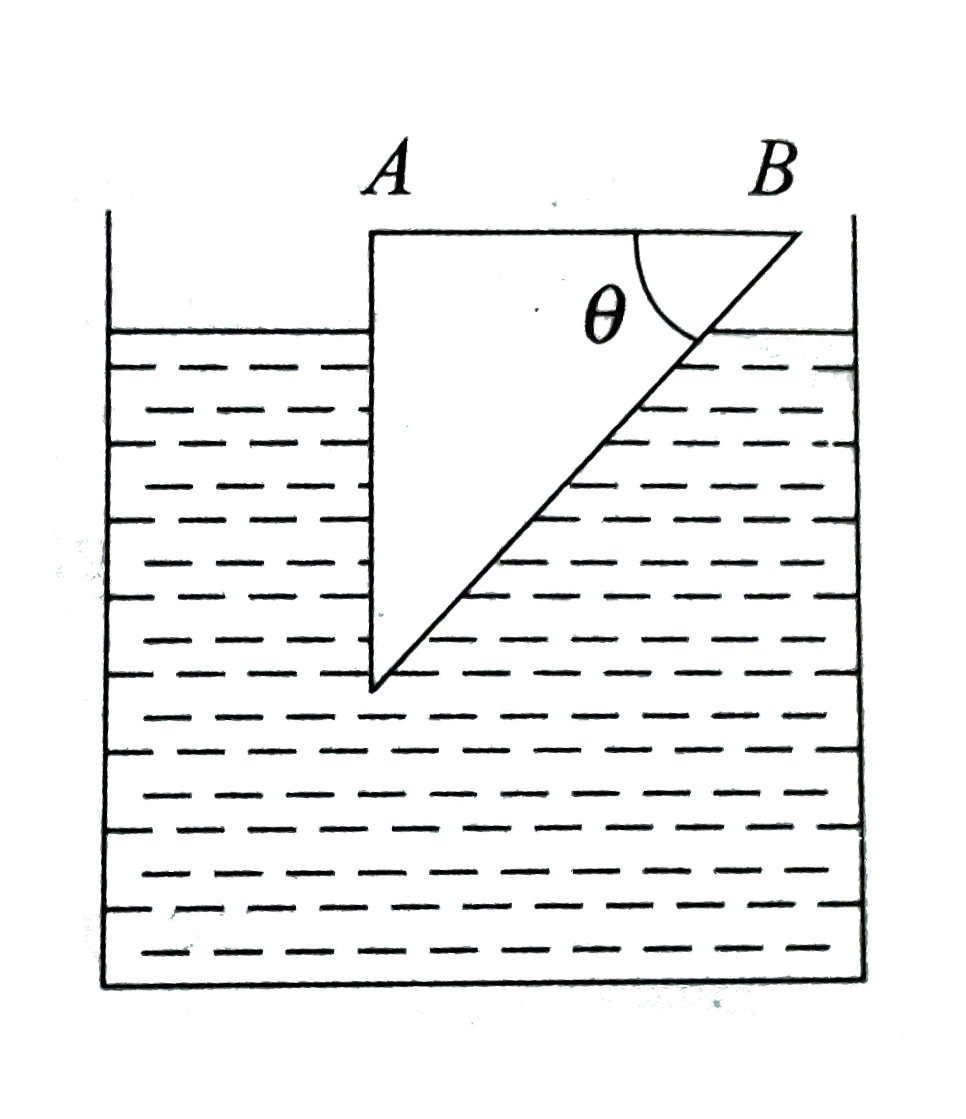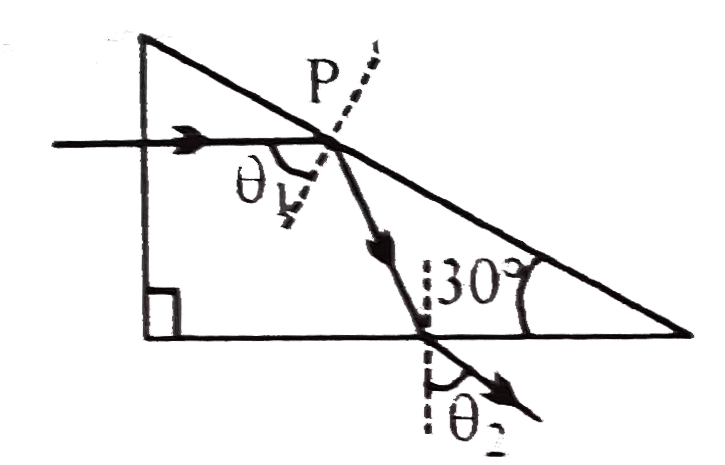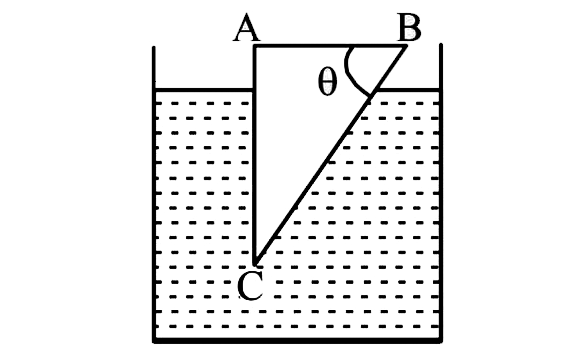(a) Show using a proper diagram how unpolarised light can be linearly polarised by reflection from a transparent glass surface.
(b) The figure shows a ray of light falling normally on. the face AB of an equilateral glass prism having refractive index 3/2, placed A in water of refractive index 4/3. Will this ray suffer total internal reflection on striking the face AC? Justify your answer.
The angle of incidence of the ray . On striking the face AC is ( as from figure )
Also , relative refreactive index of glass . With respect ot the surrounding water is
Also
For total internal reflection ,the requuired critical angle , in this case , is given by
Hence the ray would not suffer total internal reflection on striking the face AC
[The students-may just write the two conditions needed for total internal reflection without analysis of the given case , student may be awarded

Topper's Solved these Questions
- 2018 QUESTION PAPER (DELHI ) BOOK - CBSE COMPLEMENTARY MATERIALCHAPTER - 2018 QUESTION PAPER (DELHI ) EXERCISE - SECTION E
15 Videos
- 2018 QUESTION PAPER (DELHI ) BOOK - CBSE COMPLEMENTARY MATERIALCHAPTER - 2018 QUESTION PAPER (DELHI ) EXERCISE - SECTION E
15 Videos
- CBSE BOARD EXAMNATION PAPER (2017 )BOOK - CBSE COMPLEMENTARY MATERIALCHAPTER - CBSE BOARD EXAMNATION PAPER (2017 )EXERCISE - SECTION E
12 Videos
Similar Questions
(a) Show using a proper diagram how unpolarised light can be linearly polarised by reflection from a transparent glass surface.
(b) The figure shows a ray of light falling normally on. the face AB of an equilateral glass prism having refractive index 3/2, placed A in water of refractive index 4/3. Will this ray suffer total internal reflection on striking the face AC? Justify your answer.
View SolutionIn the figure given below, a ray of light PQ is incident normally on one face AB of an equilateral glass prism. What are the angles at faces AB and AC?

View Solution
Knowledge Check
A glass prism of refractive index 1.5 is immersed in water (refractive index 4/3) . A light beam normally on the face AB is totally reflected to reach on the face BC if
 Asinθ≥89B23<sinθ≥<89Csinθ≤23Dsinθ≤89
Asinθ≥89B23<sinθ≥<89Csinθ≤23Dsinθ≤89A ray of light is incident normally on one face of30∘−60∘−90∘prism of refractive index 5/3immersed in water of refractive index4/3as shown in figure.
 AThe exit angle θ2of the ray is sin−1(5/8)BTotal internal reflection at point Pceases if the refractive index of water is increased to 5/2√3by dissolving some substance.CTotal internal reflection at point P ceases if the refractive index of water is increased to 5/2√3 by dissolving some substance.DTotal internal reflection at point Pceases if the refractive index of water is increased to5/6by dissolving some substances.
AThe exit angle θ2of the ray is sin−1(5/8)BTotal internal reflection at point Pceases if the refractive index of water is increased to 5/2√3by dissolving some substance.CTotal internal reflection at point P ceases if the refractive index of water is increased to 5/2√3 by dissolving some substance.DTotal internal reflection at point Pceases if the refractive index of water is increased to5/6by dissolving some substances.A ray of light is incident normally on one face of 30∘−60∘−90∘ prism of refractive index 5/3 immersed in water of refractive index 4/3 as shown in figure .
_E01_076_Q01.png) AThe exit angle of θ2 of the ray is sin−1(5/8)BThe exit angle θ2 of the ray is sin−1(54√3)CTotal internal reflection at point P ceases if the refractive index of water is increased to 52√3 by some substanceDTotal internal reflection at point P ceases if the refractive index of water is increased to 5/6 by dissolving some substance
AThe exit angle of θ2 of the ray is sin−1(5/8)BThe exit angle θ2 of the ray is sin−1(54√3)CTotal internal reflection at point P ceases if the refractive index of water is increased to 52√3 by some substanceDTotal internal reflection at point P ceases if the refractive index of water is increased to 5/6 by dissolving some substance
A light ray falls perpendicular on one face of an equilateral prism having refractive index √2 .The angle of deviation is :
View SolutionA ray of light falls normally on an equilateral prism of refractive index μ=√3. Match of the following table.

View SolutionA ray of light is incident normally on one face of an equilateral prism of refractive index 1.5. The angle of deviation is: (Given sin−1.23=42∘)
View SolutionA glass prism of refractive index 1.5 is immersed in water (refractive index 4/3). A light beam incident normally on the face AB is totally reflected to reach on the face BC if.

View SolutionA glass prism of refractive index 1.5 is immersed in water (refractive index 4/3). A light beam incident normally on the face AB is totally reflected to reach on the face BC if

View Solution
